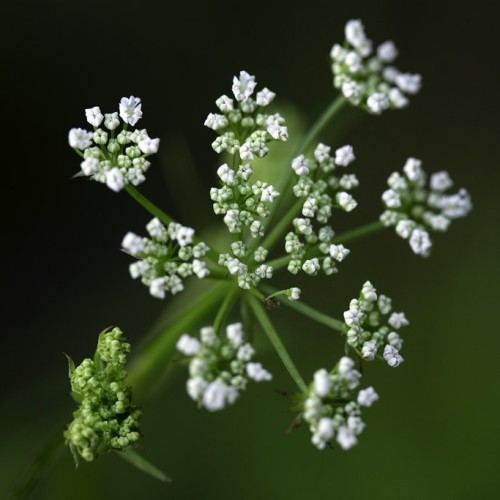
Spotted Water Hemlock
Cicuta maculata var. maculata
Watering:
Frequent
Hardiness Zone:
Flowers:
Flowers
Sun:
full sun,part shade
Leaf:
Yes
Growth Rate:
Low
Poisonous To Humans:
Yes
Poisonous To Pets:
Yes
Invasive:
Yes
Care Level:
Extreme
watering
The Bulb Bearing Water Hemlock (Cicuta bulbifera) is a fast-growing perennial that prefers moist soils. This species is drought tolerant, but it does best when watered regularly. Give the plant a deep watering about every 5-7 days, depending on the environmental conditions (such as rainfall and temperature). During times of heat and dry spells, it is important to make sure the soil has adequate moisture. If the soil is dry at the 2 inch depth, water more frequently. Avoid overwatering, as this can cause root rot or other issues.
sunlight
Bulb Bearing Water Hemlock (Cicuta bulbifera) grows best in full sun and requires an average of 6 to 8 hours per day. Depending on location, this could range from peak sunlight in summer to less in winter. When the sun is brightest, Cicuta bulbifera should receive direct sunlight to maximize photosynthesis and encourage healthy growth. It is best to provide ample sunlight throughout the day but with periods of shade to protect the plant from extreme heat in areas with intense summer sun.
pruning
Pruning should be minimal with Bulb Bearing Water Hemlock (Cicuta bulbifera), as this is a short-lived species and needs to be replaced after a few years. Pruning should take place in late winter or early spring, before any new growth begins. To remove dead or damaged branches, use pruning shears to make a clean cut. Remove any foliage that isn't in good condition, such as yellowing or dying leaves. Also, thin out too dense areas of the stem and branches to promote new growth. Prune away any branches that are crossing over each other or competing for light, as this can restrict growth and encourage disease. Lastly, cut back any flowering stems that don’t need to be kept, as this encourages better growth and production next season.
